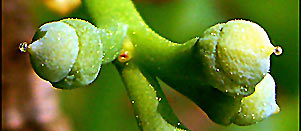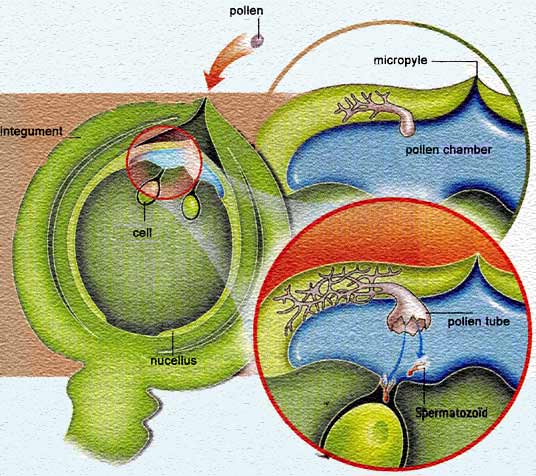|
- schemes of the ovule development
-![]() short
movie scene showing two motile sperms + snapshots + YouTube video and more
short
movie scene showing two motile sperms + snapshots + YouTube video and more

pollination droplet is present on the micropyle at the tip of the integument |
|
Drawings courtesy University of Toronto (Canada).
|

 Drawing after 'Pour la Science' 2008. pollen
|

|
During the months following pollination, the pollen grows big enough to form two motile sperms in the pollen chamber.
Scene from the research film 'The sea in the seed, sperm of Ginkgo biloba and reproductive evolution in plants' , produced by Okada Kazuo; the best scientific film award at Ronda, Spain and TEPIA Grand Prix in Tokyo (2000) - TokyoCinema Inc.
Snapshots taken from this film and other photos: Cor Kwant.
Watch the full movie "The sea in the seed" on YouTube. |

Video fragment: spermatozoid
of Ginkgo biloba
(This fragment is not on YouTube; loading
please wait.)
From
ScienceNet, Japan
|
|
Watch video (Japanese): Swimming
Ginkgo sperm (includes micro fragments): click
here.